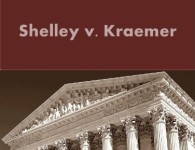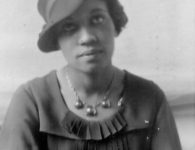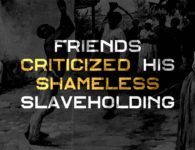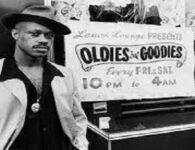June 7, 1892: Homer Plessy is arrested for refusing to leave his seat in the “whites-only” car of a train; he would lose the resulting court case, Plessy v. Ferguson.
Homer Plessy was the plaintiff in the United States Supreme Court decision in Plessy v. Ferguson. Arrested, tried and convicted in New Orleans of a violation of one of Louisiana’s racial segregation laws, he appealed through Louisiana state courts to the U.S. Supreme Court and lost. The resulting “separate-but-equal” decision against him had wide consequences for civil rights in the United States. The decision legalized state-mandated segregation anywhere in the United States so long as the facilities provided for both blacks and whites were putatively “equal”.
The son of free African-Americans, Homer Plessy was born on St. Patrick’s Day in 1862, when federal occupation troops under General Benjamin Franklin Butler had liberated African Americans in New Orleans. Blacks could then marry whomever they chose, sit in any streetcar seat, and attend, briefly, integrated schools.
As an adult, Plessy found that those gains from the period of federal occupation during the American Civil War (1862-1865) and the Reconstruction era had been abolished after troops were withdrawn in 1877 on orders of U.S. President Rutherford B. Hayes.
On any other day in 1892, Plessy with his pale skin color could have ridden in the train car restricted to white passengers without notice. He was classified “7/8 white” or an octoroon according to the language of the time. Although it is often interpreted as Plessy had only one great grandmother of African descent, both of his parents are identified as free persons of color on his birth certificate. The racial categorization is based on appearance rather than genealogy.
Hoping to strike down segregation laws, the Citizens’ Committee of New Orleans (Comité des Citoyens) recruited Plessy to violate Louisiana’s 1890 separate-car law. To pose a clear test, the Citizens’ Committee gave advance notice of Plessy’s intent to the railroad, which had opposed the law because it required adding more cars to its trains.
On June 7, 1892, Plessy bought a first-class ticket for the commuter train that ran from New Orleans to Covington, sat down in the car for white riders only and the conductor asked whether he was a colored man, Medley said. The committee also hired a private detective with arrest powers to take Plessy off the train at Press and Royal streets, to ensure that he was charged with violating the state’s separate-car law. Everything that the committee plotted occurred as planned except for the final rejection in 1896 by the Supreme Court.
“By then the composition of the U.S. Supreme Court had gained a more segregationist tilt, and the committee knew it would likely lose. But it chose to press the cause anyway, Medley said. ‘It was a matter of honor for them, that they fight this to the very end.”
PLESSY V. FERGUSON:
The Comité des Citoyens (“Citizens’ Committee”) was a civil rights group made up of African Americans, whites, and Creoles. The committee vigorously opposed the recently enacted Separate Car Act and other segregation laws. They retained a white New York City attorney, Albion Winegar Tourgée, who had previously fought for the rights of African Americans.
In 1892, the Citizens’ Committee asked Plessy to agree to violate Louisiana’s Separate Car law that required the segregation of passenger trains by race. On June 7, 1892, Plessy, then 30 years old and resembling in skin color and physical features a white male, bought a first-class ticket on the East Louisiana Railroad running between New Orleans and Covington, the seat of now suburban St. Tammany Parish. He sat in the “whites-only” passenger car. When the conductor came to collect his ticket, Plessy told him that he was 7/8 white and that he refused to sit in the “blacks-only” car. Plessy was immediately arrested by Detective Chris C. Cain, put into the Orleans Parish jail, and released the next day on a $500 bond.
Plessy’s case was heard before Judge John Howard Ferguson one month after his arrest. Tourgée argued that Plessy’s civil rights, as granted by the Thirteenth and Fourteenth amendments of the U.S. Constitution, had been violated. Ferguson denied this argument and ruled that Louisiana, under state law, had the power to set rules that regulated railroad business within its borders.
The Louisiana State Supreme Court affirmed Ferguson’s ruling and refused to grant a rehearing, but did allow a petition for writ of error. This petition was accepted by the United States Supreme Court and four years later, in April 1896, arguments for Plessy v. Ferguson began. Tourgée argued that the state of Louisiana had violated the Thirteenth Amendment, that granted freedom to the slaves, and the Fourteenth Amendment, that stated, “no state shall make or enforce any law which shall abridge the privileges or immunities of citizens of the United States; nor shall any state deprive any person of life, liberty, and property, without due process of law.”
On May 18, 1896, Justice Henry Billings Brown delivered the majority opinion in favor of the State of Louisiana. In part, the opinion read, “The object of the Fourteenth Amendment was undoubtedly to enforce the absolute equality of the two races before the law, but in the nature of things it could not have been intended to abolish distinctions based on color, or to enforce social, as distinguished from political equality, or a commingling of the two races upon terms unsatisfactory to the either. … If the two races are to meet upon terms of social equality, it must be the result of voluntary consent of the individuals.”
The lone dissenting vote was cast by Justice John Marshall Harlan, a Kentucky Republican. In his dissenting opinion, the first Justice Harlan wrote, “I am of opinion that the statute of Louisiana is inconsistent with the personal liberty of citizens, white and black, in that state and hostile to both the spirit and letter of the Constitution of the United States.”
The “Separate but Equal” doctrine, enshrined by the Plessy ruling, remained valid until 1954, when it was overturned by the Supreme Court decision in Brown v. Board of Education and later outlawed completely by the federal Civil Rights Act of 1964. Though the Plessy case did not involve education, it formed the legal basis of separate school systems for the following fifty-eight years.
HISTORICAL MARKER:
On February 12, 2009, the Plessy & Ferguson Foundation of New Orleans honored the successes of the civil rights movement by taking part in the placing of a historical marker at the corner of Press and Royal streets, the site of Homer Plessy’s arrest in New Orleans in 1892.
On February 10, 2009, Keith Plessy and Phoebe Ferguson, descendants of the players on both sides of the Supreme Court case, appeared together on television station WLTV in New Orleans. They announced the formation of the Plessy & Ferguson Foundation for Education, Preservation and Outreach. The foundation will work to create new ways to teach the history of civil rights through film, art, and public programs designed to create understanding of this historic case and its effect on the American conscience. Keith Plessy and Phoebe Ferguson appeared together at the site of the railroad tracks in New Orleans where Homer Plessy was denied seating.
Finish Reading The Originally Post on
Daily Black History Facts





















1 Comment
This is a photo of P.B.S. Pinchback, the 24th governor of Louisiana–albeit not for long. There are no extant photos of Homer Plessy.